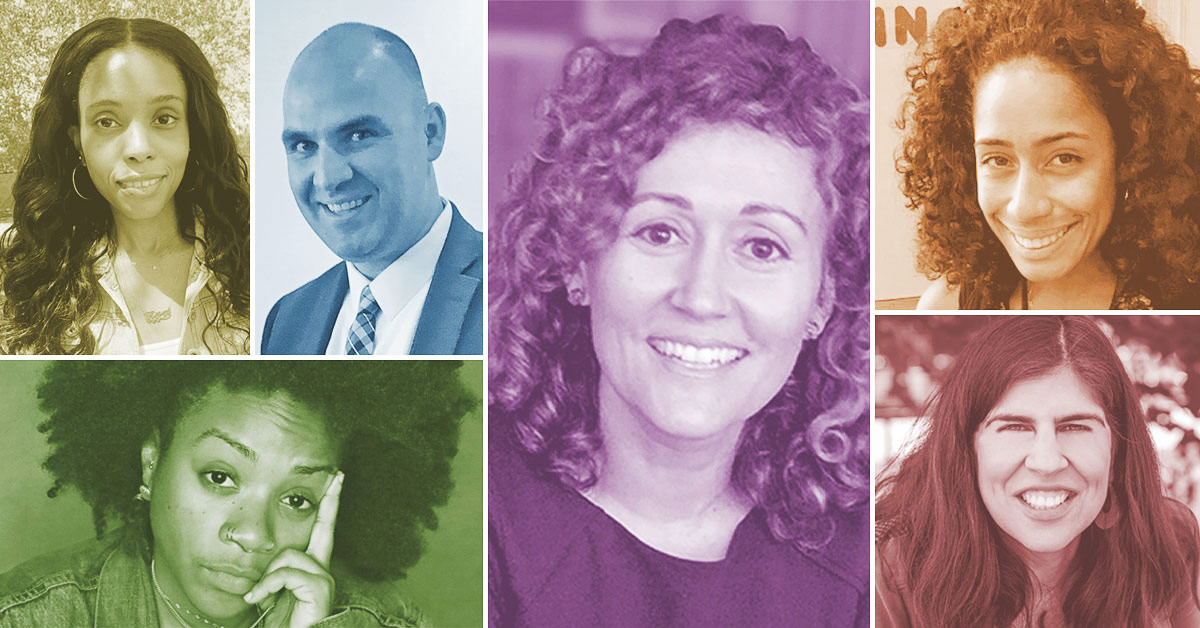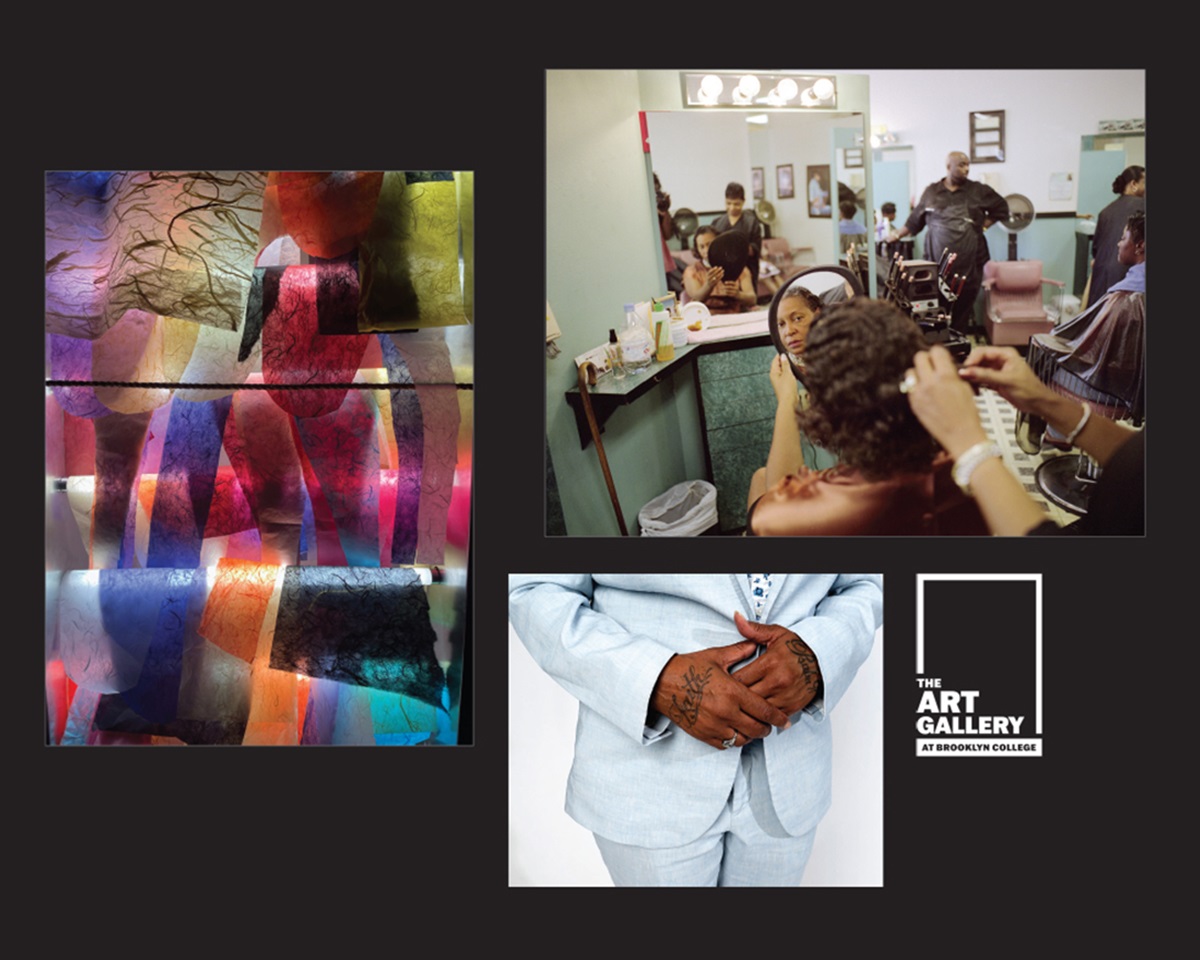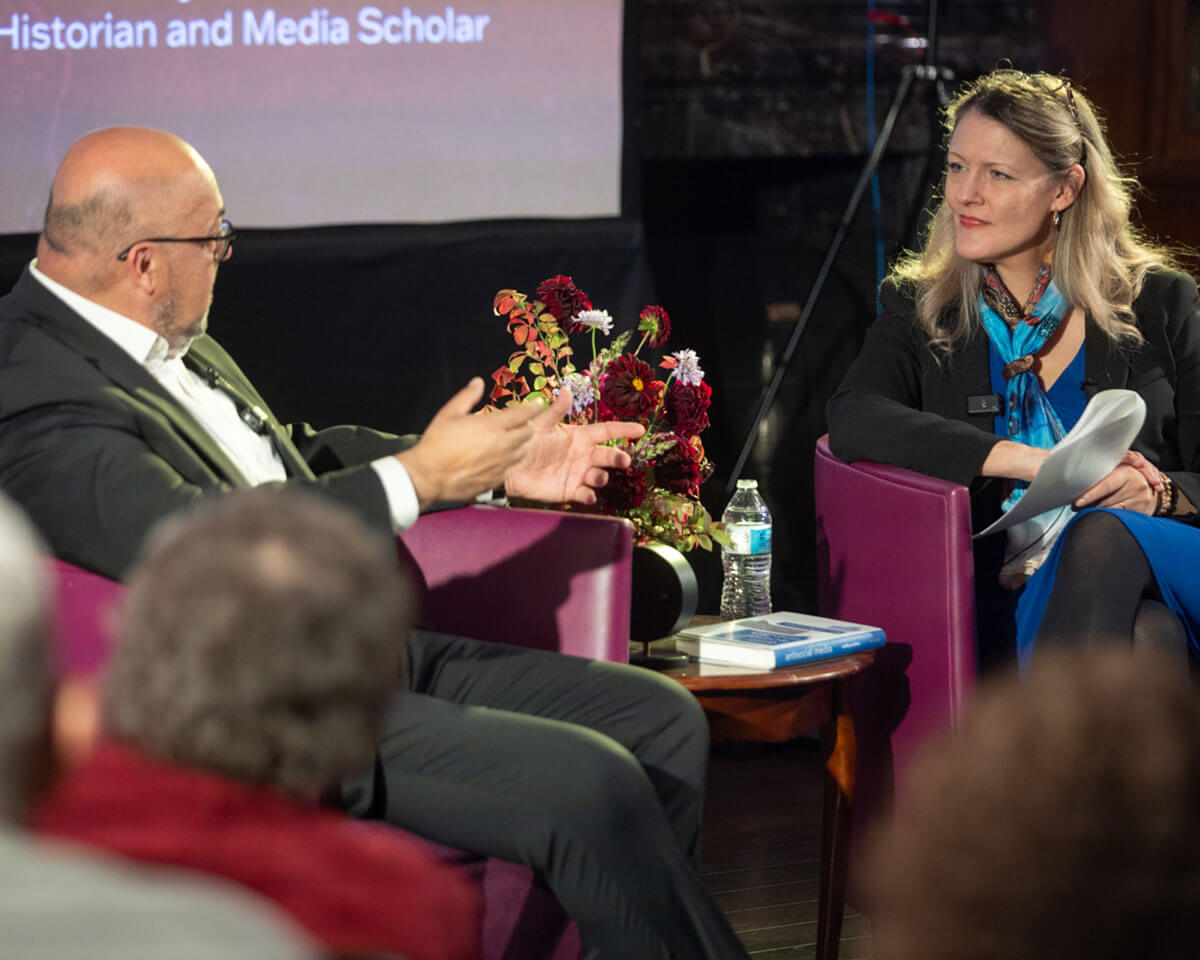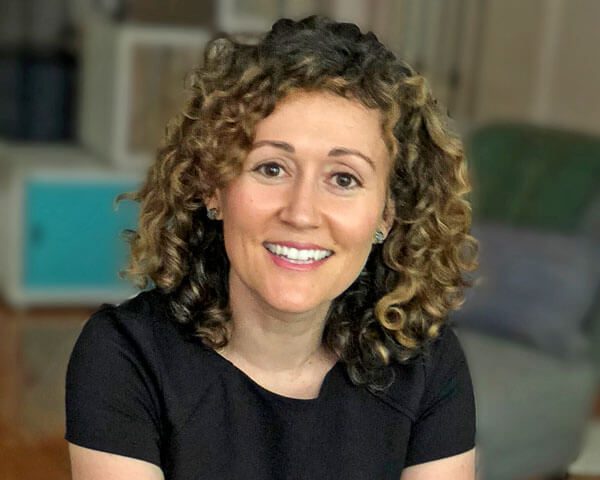
Assistant Professor Katharine Pace Miles
Katharine Pace Miles is an assistant professor and the graduate deputy in the Department of Early Childhood/Art Education and a self-professed literacy geek. A former elementary school teacher, she became fascinated by the way the mind learns to read and ended up earning a doctorate in educational psychology with a focus on the acquisition of literacy.
She knows from her own research that the flashcard approach that most kindergarten teachers use to help students memorize high-frequency words is not nearly as effective as exercises designed to support orthographic mapping, or the ability to analyze connections between letter units and their corresponding sounds.
She knows that most schools of education across the country do not inculcate their teachers with this pedagogical truth. Most have, at best, one course in early childhood literacy where the fieldwork is sometimes muddled with too many auxiliary tasks and the student-teacher candidates observe professional teachers who are not themselves enlightened by the true science of reading.
Miles is also intimately acquainted with the unfortunate facts that follow: The share of New York City’s third graders who do not read on grade level hovers around 50 percent. Nationally, 65 percent of fourth graders read below grade level. And students who are poor readers in elementary school are four times more likely to drop out of high school. Often, they are students of color whose parents could not afford tutors to help bridge the gap.
“It’s a real crisis,” she says. “We have this knowledge at the university level on how the mind learns to read, but it’s not always housed in the schools of education. Speech-language pathologists know a lot about the value of phonological awareness, and some professors in neuro- or cognitive psychology have deep knowledge of how words are stored in memory. But these professors aren’t given the mic when it’s time to implement curriculum at the school level or even in training the teachers. So it’s up to professors in schools of education to bestow this vital information on early literacy development to our pre-service teachers. We have to bridge the divide between university research and practice.”
Which is why she signed on to be the academic adviser for Reading Rescue, a research and evidence-based program that trains New York City teachers and many underutilized paraprofessionals in its tested technique of literacy intervention. The goal is to ensure that all children are reading on grade level by the end of second grade. Their data show that a majority of students who receive the intervention move up to grade level within a semester.
That evidence is of interest to President Joe Biden’s administration as it works with education leaders to create a nationwide corps of tutors trained in teaching methods with proven results. The effort is part of a broader campaign to combat what’s feared to be epidemic-level learning loss after a year of COVID-19 and remote instruction that has also disproportionately affected low-income students of color.
A coalition of education researchers out of Johns Hopkins University, who are lobbying the Biden administration, have been identifying programs that are evidence-based and can be replicated at scale, and they have included Reading Rescue among their top reading intervention programs in the country. Miles is working with officials there to figure out a way to pilot the program for broader reach, in addition to showing her own teacher candidates how to attack the problem locally.
Indeed, across the School of Education, faculty members and the teachers they have trained are honing a number instructional approaches and ideologies—and turning some old-school thinking on its head—with research-backed initiatives that not only address the school system’s historic inequities, but also boost student performance.
In addition to Miles and the army of reading coaches she is working with, professors and some of their newly minted teachers are shaking up the status quo in bilingual and math education as well.
“We have made it our top priority in the School of Education this year to focus on equity, inclusion, and anti-racist work in every one of our programs,” says April Whatley Bedford, dean of the School of Education. “Even though our faculty and administration have always shared a commitment to social justice and promoted culturally relevant curriculum and pedagogy, the events of the past year have generated intense conversations among students and faculty and have highlighted the work we still need to do to make an inclusive and nurturing environment for all.”
Win-Winning
Miles’ work with Reading Rescue got an additional boost this academic year when she secured two grants to support a partnership with the city’s Department of Education to train nearly 200 of her early childhood literacy students as Reading Rescue tutors at public schools in Bedford-Stuyvesant and Brownsville.
A grant from the Benedict Silverman Foundation paid for 10 to 12 hours of Reading Rescue training, materials, and support for Brooklyn College education students who were then paired with a struggling first- or second-grade reader for 18 to 20 hours of virtual tutoring.
It was a win-win because the pandemic had complicated the requirement for her courses that students complete 30 hours of fieldwork. Most New York City elementary schools were operating on a hybrid basis and keeping the headcount in classrooms to a bare minimum, even if they desperately needed extra hands to help address their students’ academic needs.
The Heckscher Foundation for Children, whose aim is to level the playing field for disadvantaged youth, also supported Miles’ efforts so that her students could be paid to continue tutoring the elementary students for another 20 hours in the spring semester and into the summer. That was an additional win-win that helped Brooklyn College students—many of them gig workers who had been laid off during the pandemic—gain career-focused employment while also helping struggling school students.
Miles has since obtained additional funding from an anonymous family foundation to work with schools of education across CUNY to expand the initiative this summer in order to train 300 students who will tutor five struggling readers each.
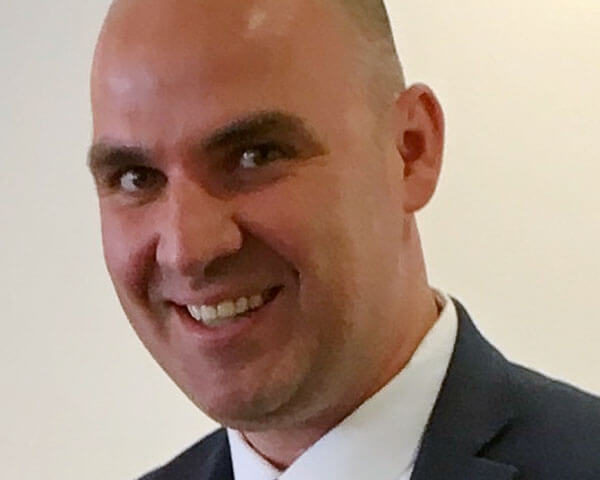
Max de Weerd, a graduate student in the Early Childhood Education program and a Reading Rescue coach.
Max de Weerd, one of Miles’ master’s degree students, got paired last fall with a first-grade girl. “This funky little person who gives me life,” he says. He would pretend to forget what they were working on so that she would take ownership and stay engaged, only to have her throw right back at him: “No, I’m making sure you’re engaged,” he recalls with a hearty laugh.
She was bright, motivated, and full of fiery personality, he says. Her mother was “super committed.” And yet, when he first started working with her, she would often just stare at a word, barely able to read at a beginning kindergarten level.
“It was hard on her staring at a word for 20 seconds and not being able to make sense of it,” he says.
De Weerd says he would spend weekends going over his training videos so that he had an array of tools in his bag.
“The training breaks it down in a very manageable way to make sure you are working right above their frustration level—with some techniques that help get them through—but not too high above,” he says.
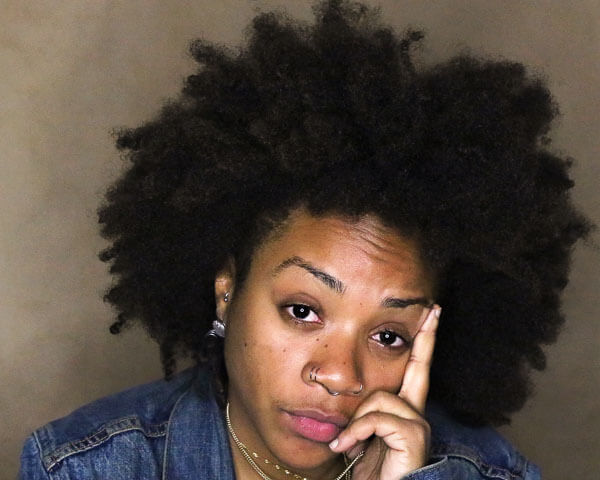
Liselle Ferdinand ’21, a Reading Rescue coach and new alumna of the Early Childhood Education master’s degree program.
Liselle Ferdinand is another master’s degree student who graduated in May and says she plans to tutor in the Reading Rescue program “as long as they will let me and I have the time to give.”
She would come up with dances that correlated with different sounds with one of her first graders, have drawing contests—“he’s tired of beating me,” she says—and has bonded over a common love for sneakers.
“We have a nice chemistry,” says Ferdinand. “Even when he was in a funk, we just kind of worked.”
The first grader she tutored moved from reading at a level D to a level I while de Weerd’s spunky girl moved from a level B to a level E, both more in line with first-grade standards.
“After just a couple of weeks, I could see the progress and it was really motivating for me,” he says. “More importantly, she is so proud of herself. She tells me now, ‘No Mr. Max, don’t tell me. Just give me a minute. I got this.’”
A Mathematician Named Shequana
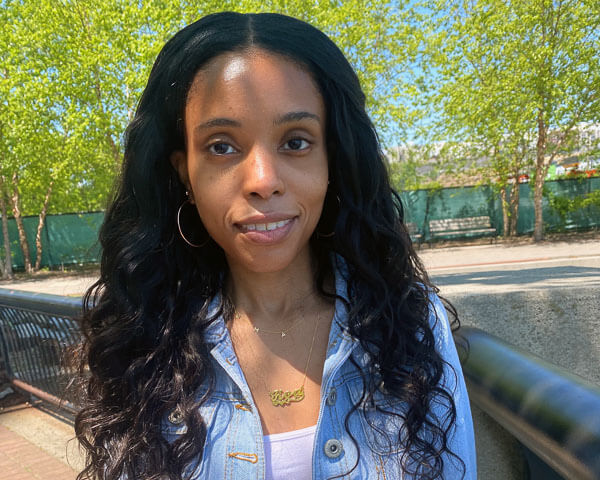
Shequana Wright-Chung ’07, ’09 M.S.Ed., assistant adjunct professor of early childhood mathematics.
There’s a debate bubbling in mathematics education over ways in which the discipline can better serve students of color. It involves, among many things, discussions of the best way to sequence classes, whether ability grouping is a practice that has seen its day, and how much encouraging teachers to examine their own assumptions and biases should become part of professional development and teacher training.
For Shequana Wright-Chung ’07, ’09 M.S.Ed., the answer to the latter is: a lot.
An adjunct assistant professor of early childhood mathematics, Wright-Chung kicks off the semester by having her students tell their math story, the one deep down that takes them back to when they were a kid, what their earliest experiences were, their fears, and their biases.
Hers takes her back to the fifth grade, when her class featured a math center in the classroom, which she loved, but the only picture she had ever seen there was of Albert Einstein.
“Everyone in that class was either Latin American or Black and we didn’t see ourselves represented,” she recalls now. “I just remember having an awareness of that, that mathematicians didn’t have names like Shequana.”
She still liked math by junior high school and was able to do it well but doesn’t recall ever being told she was good at it. In college, she ended up dropping a calculus class when—after having her raised hand constantly overlooked for that of the White male who sat next to her—her professor expressed his shock that she had gotten the highest score on an exam.
One story that prompts Wright-Chung to constantly reflect on the impact of stereotypes across races is from an Asian American student who struggled with math but felt that, because of stereotypes associated with her race, everyone overlooked her struggles and expected her to excel.
“The student shared that it made her feel stupid that she did not understand math concepts nor receive the supports needed,” says Wright-Chung, whose husband is South Korean. That makes her own young, half-Black, half-Asian son a walking embodiment of two diametrically opposed math stereotypes. She’s hoping that he is neither overlooked nor assumed inherently inclined.
She’s also hoping the kind of work she does with her students makes a difference. Their stories take them to in-depth discussions that make her students reassess how they present themselves when teaching young children in the classroom.
“I do see a change in their language and mindset, the way they speak about teaching practices, and what they notice in the field,” says Wright-Chung. “They are looking more at the assets children bring into learning spaces, and more attuned to how their body language and facial expressions impact children’s learning. These are promising steps in shifting their mindset.”
Wright also evaluates the city’s K-12 mathematics teachers in her job with the Department of Education’s Office of Teacher Development. In that role, she observes remote and in-person learning spaces to ensure that teaching practices center equity and justice for all students, especially those who have been historically marginalized and underserved.
“Are teachers creating supportive environments that center students’ assets, include high expectations and scaffolds for each student? Are teachers planning and facilitating engaging and coherent learning activities that meet students where they are in this moment? Are teachers taking the time to reflect on their bias and how that shows up in teaching and learning spaces?” she explains the questions she asks during her observations in classrooms. “All of these things have an impact.”
The math stories help her students to “see where the disconnect happens,” she says. “It gets them thinking about systemic barriers that are impacting how, why, and what students are learning. That awareness disrupts the way we teach.”
“Because every child should feel represented and have fun at the math center.”
Multilingual and Mighty
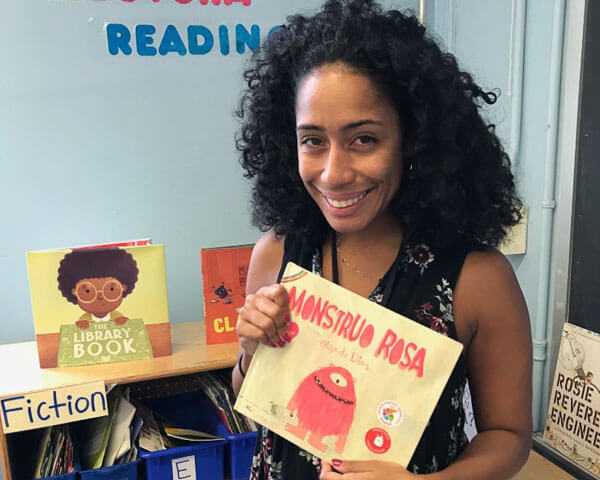
Rebecca Quinones ’18, a fourth-year dual-language teacher who encourages students to use and value their native language and culture.
Rebecca Quiñones ’18 is in her fourth year as a second-grade Spanish dual language teacher at Ditmas Park’s PS 139, located not far from where she grew up as a bilingual speaker.
It’s a community that is home to large Victorians and modest walkups at once, making it ripe for the gentrification that has been changing the landscape in neighborhoods across Brooklyn.
Quiñones, the kind of teacher who can see herself in her students, welcomes the transformation the community has undertaken over the years, all the newcomers—a mix of immigrants from Pakistan, Bangladesh, Haiti, and Mexico and more recently, well-off White families—that together have made her elementary school one of the most linguistically diverse in Brooklyn.
“We have a big chunk of affluent, English-speaking kids whose families are attracted to the dual language program. They come in with experiences, language, and vocabulary that a lot of kids wouldn’t otherwise be exposed to,” she says, discussing how the changes have played out in her classroom. “I welcome that. But they can’t be the dominant majority. There has to be a conscious effort to tell the community and our non-English speaking families that their language matters and has value here that is equal to the value that English speakers bring.”
For Quiñones, one strategy that is key in that effort is encouraging translanguaging, the familiar process where multilingual speakers portmanteau their communications by going in and out of different languages—an age-old phenomenon for sure, but one that was mostly pooh-pooh’ed in bilingual education circles until recently.
The idea is that bilingual speakers deploy particular features from the languages in their repertoire to make meaning and negotiate different ideas or texts in ways that aid significantly in their learning and engagement and help students to leverage the strengths they bring. What’s more, encouraging its use sends a message that pushes back on bygone-era ideologies that were used to maintain linguistic, cultural, and racial hierarchies.
“It’s a different outlook,” explains Quiñones, who this year was named to the International Literacy Association’s 30 Under 30 list, a recognition of educators who bring on positive change through literacy. “It’s an outlook that tells my native Spanish speakers that yes, I’m here to teach you English and much of what you will be evaluated on will require competency in the English language. But at the same time, your language has a lot of value here. You have a lot to teach me and the other students so let’s learn from each other.”
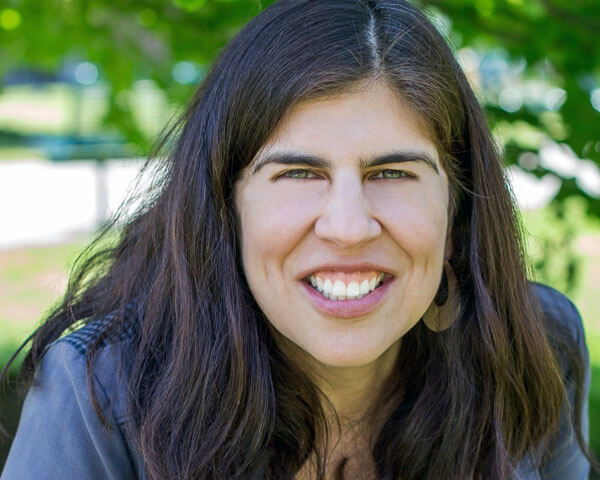
Laura Ascenzi-Moreno, associate professor and bilingual program coordinator
Quiñones first became familiar with the idea as a pedagogical perspective when she was working on her master’s degree in bilingual education and taking a class with Laura Ascenzi-Moreno, an associate professor and the bilingual program coordinator in the Childhood, Bilingual and Special Education Department.
The two have continued to conduct research together since Quiñones graduated, some of which has looked at the practice of translanguaging in reading instruction. They have found that a lot of the strategies that kids use when solving tricky words are easier taught in Spanish, because the sounds that go with different letter combinations are more consistent than in English.
“I teach my students to decode in Spanish alongside English,” says Quiñones, explaining the process of teaching children how to sound out words.
She says she is constantly “strategically switching,” presenting a lesson in Spanish, for example, but throwing out key phrases in English. If she reads them a book in English, the class will analyze it in Spanish or vice versa. “I find it helps everyone to access the material in some way,” she says.
It’s also “a way to accept the whole child in the classroom,” explains Ascenzi-Moreno, who just published a book, Rooted in Strength: Using Translanguaging to Grow Multilingual Readers and Writers (Scholastic Professional, 2021), with Lehman College associate professor Cecilia Espinosa.
“If we say to students, ‘Sorry, you can’t use your Spanish here,’ we are saying we only accept the part of you that matches school,” says Ascenzi-Moreno.
The book bolsters the case for translangauging by providing an overview of the research on its prowess as a teaching tool and presenting ways to use it in the classroom.
“It’s a way to root your teaching in the student’s strength,” she says. “When we do that, everyone wins.”
Return to the BC Magazine

